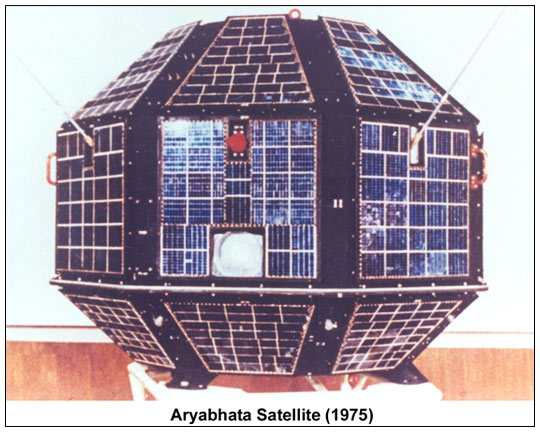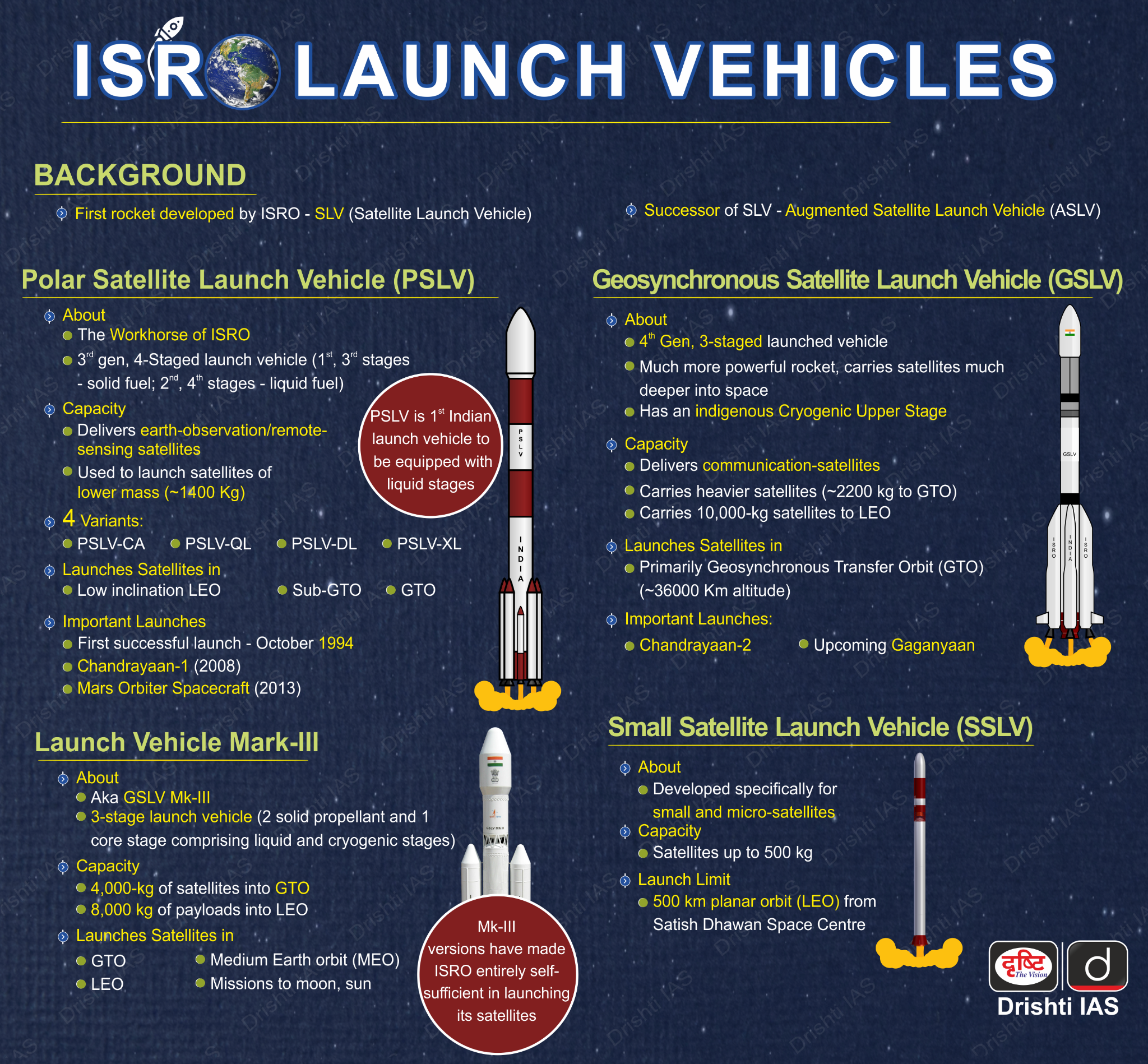Important Facts For Prelims
Satellite Technology Day 2024
- 25 Apr 2024
- 3 min read
Why in News?
U R Rao Satellite Centre (formerly known as ISRO Satellite Centre (ISAC)), Department of Space, in Bengaluru recently celebrated Satellite Technology Day (STD) 2024, marking the significant milestone of the 50th anniversary of India's first satellite launch, Aryabhata, on 19th April 1975.
- The event highlighted URSC's achievements along with recent missions like Chandrayaan-3, Aditya-L1, and X-ray Polarimeter Satellite which garnered national and international recognition.
What are the Key Facts About Aryabhata Satellite?
- The Aryabhata spacecraft, named after the 5th Century CE mathematician and astronomer, was India's first satellite. It was completely designed and fabricated in India and launched from Kapustin Yar, Russia on 19th April 1975.
- On that day, India became only the world’s 11th nation to send a satellite into orbit.
- Aryabhata was built by the Indian Space Research Organization (ISRO) to conduct experiments in X-ray astronomy, aeronomics, and solar physics.
| Aryabhata Satellite | |
| Payload | X-ray Astronomy Aeronomy and Solar Physics |
| Launch site | Volgograd Launch Station (presently in Russia) |
| Launch vehicle | C-1 Intercosmos |
U R Rao Satellite Centre
- U R Rao Satellite Centre named after the former ISRO Chairman Dr. Udupi Ramachandra Rao, it is the lead centre of the ISRO responsible for design, development, checkout & integration of communication, navigation, remote sensing, scientific and small satellite missions.
- URSC is actively involved in creating cost-effective space infrastructure for India.
- The centre is responsible for the total Spacecraft project management from the Conceptualisation phase to In-orbit spacecraft operationalisation phase.
UPSC Civil Services Examination Previous Year Question (PYQ)
Q. With reference to India’s satellite launch vehicles, consider the following statements: (2018)
- PSLVs launch satellites useful for Earth resources monitoring whereas GSLVs are designed mainly to launch communication satellites.
- Satellites launched by PSLV appear to remain permanently fixed in the same position in the sky, as viewed from a particular location on Earth.
- GSLV Mk III is a four-staged launch vehicle with the first and third stages using solid rocket motors; and the second and fourth stages using liquid rocket engines.
Which of the statements given above is/are correct?
(a) 1 only
(b) 2 and 3
(c) 1 and 2
(d) 3 only
Ans: (a)
Q2. Consider the following statements: (2010)
The satellite Oceansat-2 launched by India helps in
- estimating the water vapour content in the atmosphere
- predicting the onset of monsoons.
- monitoring the pollution of coastal waters.
Which of the statements given above is/are correct?
(a) 1 and 2 only
(b) 2 only
(c) 1 and 3 only
(d) 1, 2 and 3
Ans: (d)






